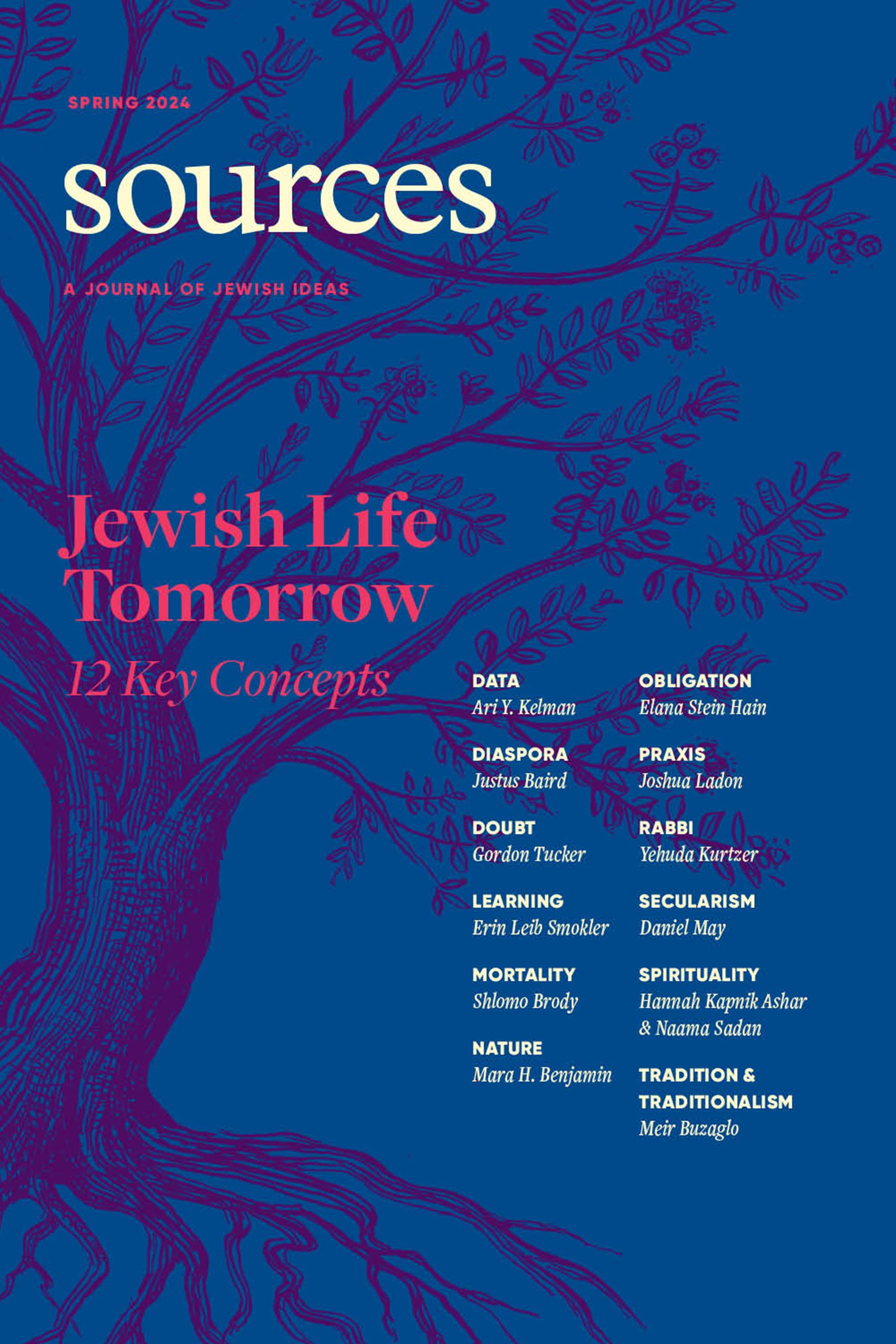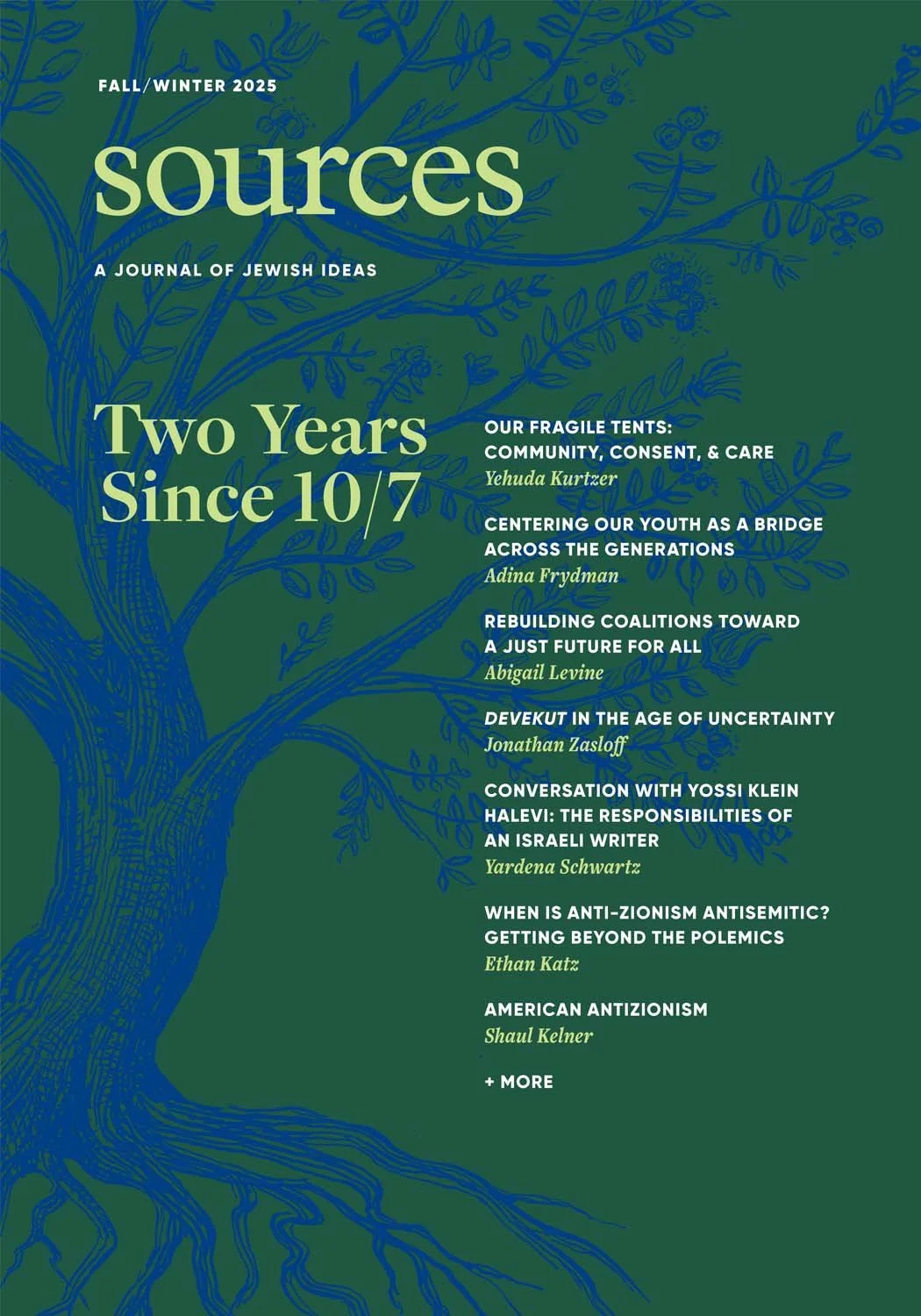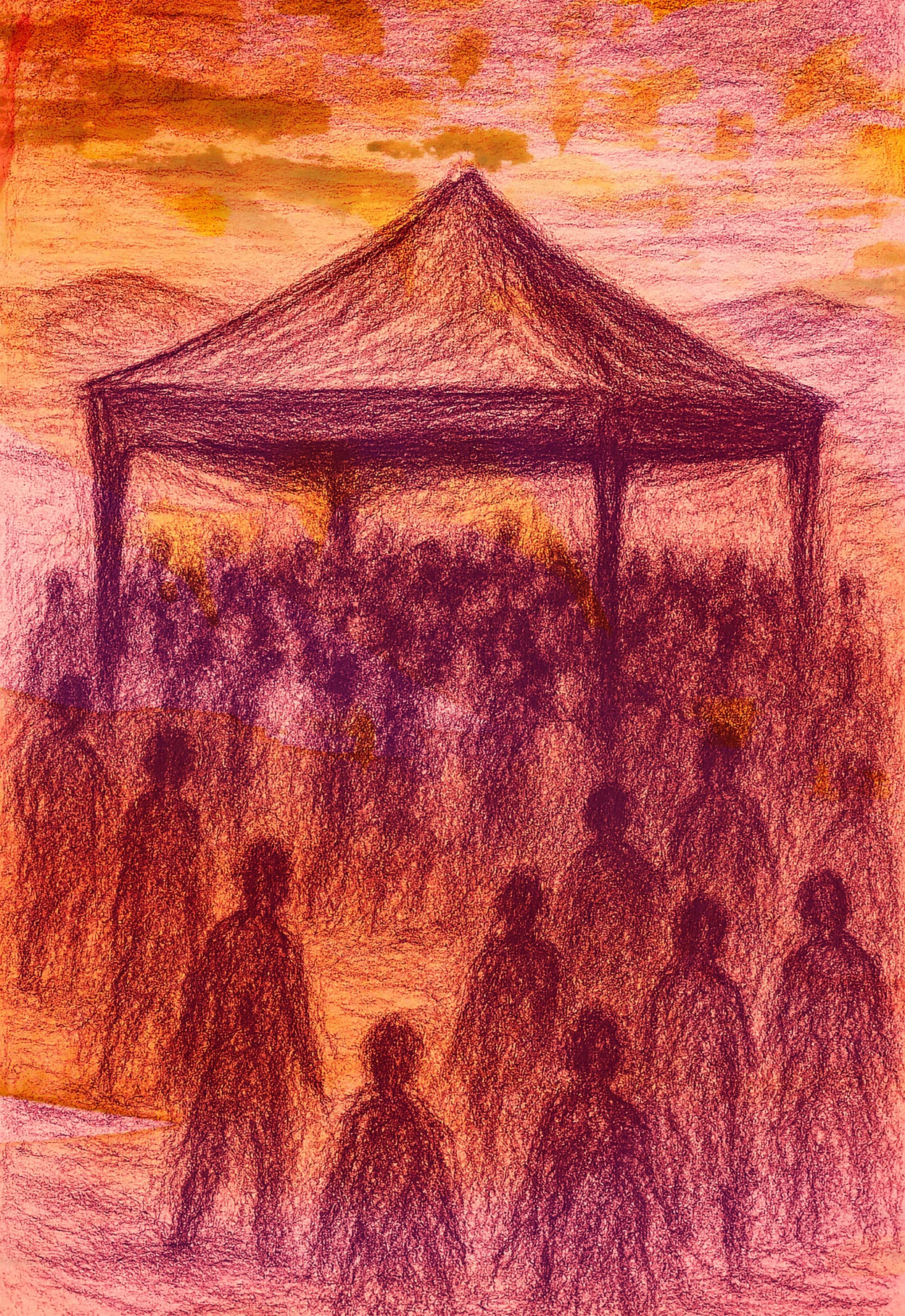Praxis
Joshua Ladon
Joshua Ladon is the Director of Education for the Shalom Hartman Institute of North America.
Praxis is a term used within religion and philosophy to describe the interplay between activities, behaviors, and practices of a tradition, and the texts, study, and reflection that inform and are informed by these practices. Contemporary scholars and rabbis will often use the term “praxis” as a fancy stand-in for the term “practice,” possibly as pushback against a history of Christian critiques of Jews following their Law in cold, rote ways. A robust Jewish praxis recognizes that just as the text may lead one to practice in a particular way, so too, practice may lead to a change in the textual or philosophical tradition that originally inspired it.
Because Jewish practice draws so heavily on its rich textual tradition—not only for inspiration and making meaning, but for legal decisions regarding the correct ways to perform said practices—there is a tendency to understand the relationship between our textual tradition and the performance of Jewish behaviors as unidirectional, moving only from study to action. I want to advocate for a fuller notion of Jewish praxis, one that sees the relationship between our textual tradition and our activities as symbiotic and mutually constitutive. This is not just an academic exercise. When we think of study as merely an input for something more important, we often frame it narrowly as “education,” and quickly begin to treat it—as well as those who study and teach—as a means to an end. Through a richer understanding of praxis, we can begin to manifest a contemporary Judaism that takes seriously our rich tradition and its calls to build a world of holiness.
The question of the relationship between practice and study is most famously explored in a story from the Babylonian Talmud:
And there was already an incident in which Rabbi Tarfon and the Elders were reclining in the loft of the house of Nit’za in Lod, when this question was asked of them: Is study greater or is action greater? Rabbi Tarfon answered and said: Action is greater. Rabbi Akiva answered and said: Study is greater. Everyone answered and said: Study is greater, as study leads to action. (bKiddushin 40b)
This story is the rabbinic version of Greek debates about the relationship between theory and practice. While it might appear at first glance that the rabbis elevate study above action, the reason they do so (only because study leads to action) makes it impossible to know for certain. Medieval Jewish philosophers, influenced deeply by rationalist Greek and Islamic philosophy, tried to explain Rabbi Akiva’s answer in their own terms. For some, the fact that study leads to action reflects action’s greater value. For these thinkers, action, as the product of study, is more valuable than the process. For others, study, seen as the cause for future activity, reigns supreme.
This episode looms large, especially in our contemporary milieu, where education is generally understood primarily as a means of securing one’s future economic prospects. This exacerbates the tendency to see all forms of study, including Jewish education, as inputs that correlate with predetermined, particular outputs. How often have I heard fellow rabbis and educators lament that “if people knew more about x, y, and z, then…” as though greater knowledge of the tradition would immediately translate into commitments and activities that would fill synagogue pews every Shabbat.
Even the idea of literacy as a model of education falls prey to this type of thinking. E.D. Hirsch’s advocacy of a core curriculum that all Americans need to know adopts what Paulo Freire calls a “banking” model of education, which imagines knowledge as something that can be stored in the minds of students until some necessary future point. In the world of Jewish education, Joseph Telushkin’s well-known compendia of essential Jewish texts are built on the same assumption.
But I don’t think this is how study really works: in my experience, the tether between study and action is often quite tenuous and rarely linear. Further, the boundary between “study” and “action” is hardly exact. Isn’t study, especially Jewish study, itself an activity? And so much Jewish activity is understood, from the outset, as a set of experiences that shape one’s heart and mind. Rejecting a strict dichotomy between study and action can help us understand what a vibrant and healthy Judaism looks like, one that is lived more than it is reported; one that is holistic, rather than episodic or fragmented.
Study as Action
The idea that study is itself an activity is not particularly radical. Reb Hayyim of Volozhin, the architect of the 19th century Lithuanian Torah Lishma philosophy, states this explicitly in his commentary on Pirkei Avot 3:19, arguing that “study itself is a form of practice, as are all other deeds, and it is greater still because it also leads to those other practices.” Today, we understand much of study to be a solitary experience, an individual acquiring knowledge from some other source, whether a book, an asynchronous online course, a YouTube video, or a podcast. With all of these, the process of acquiring knowledge has little to do with either an instructor or other disciples.
But Jewish study has long been a social and political activity, something one does with others. It is a public conversation that inducts its participants into a community of practice. This is key to Jewish philosopher David Novak’s reading of the Talmudic debate between Rabbi Akiva and Rabbi Tarfon. Their argument, he explains, was not about abstract concepts but about the implications of the Roman occupation of Judea. Given that Jewish study was the most public Jewish practice, could Judaism survive Rome’s outlawing of public Judaism? (It’s no accident that the text specifies that their conversation happens in the attic of a home, far away from prying eyes.) Read this way, Rabbi Tarfon says that action is greater because he imagines that Judaism can exist in the long run without study. Rabbi Akiva argues that study leads to practice because he continues to believe that public study is needed to ensure that Jews would continue to generate a lived Judaism.
The public and social nature of Jewish study is central to understanding its political valence. By “politics” here, I do not mean the bickering of pundits on 24-hour cable news but the set of conversations and activities that serve to enable a Jewish community to fashion itself. Since the days of Rabbi Akiva and Rabbi Tarfon, Jews (until recently, this meant primarily men) have sat around a set of texts and argued about what it means to enact holiness. Because it is a social activity, through interaction with the voices on the page and the voices around the page, one is confronted with different pathways on how to be. Such an effect can happen even in the smallest interactions between people: when we speak with others, we are changed, as are they. Franz Rosenzweig, in his essay, “The Builders,” first written as a letter to Martin Buber, explains that to speak as a teacher is to shift student thinking. At the same time, he notes, “New listeners, however, always imply new demands; thus, a teacher himself is changed by what he teaches his students.” Changed listeners, now different than they once were, require their teacher, the original speaker, to change in response to their new position. Or, as Rosenzweig puts it, “you speak now to other hearers, even though they are the same as the ones who listened to you before.”
Hannah Arendt echoes these sentiments when she defines “action” as something that can only happen in the presence of others, using the medium of speech. For Arendt, engaging one another in public space, transcending our own singular worlds through language, and creating political unions beyond our specific individual needs—these are the highest forms of human activity. Study, when framed as a public project where humans work out their differences and imagine a future together, is a political act.
Love Jewish Ideas?
Subscribe to the print edition of Sources today.
Action as Study
The converse side of the relationship between action and study is that practicing Judaism comes to shape our own worldviews. In strict understandings, the idea of Jewish practice often becomes synonymous with mitzvot, commandments, and with them, a sense of obligation. Here, one might argue that Jews should feel obligated to God and respond with a specific set of ritual behaviors outlined by halakhah (Jewish law). This makes Jewish practice into a set of actions that can be counted and measured. Did you light candles last Friday night? Did you pray three times today? Did you refrain from prohibited work on the Sabbath? What about on Sukkot?
I want to resist this way of thinking about Judaism. The nature of Jewish practice, in my view, is far broader than halakhic behavior.
Our practices shape us in ways both explicit and implicit. When Maimonides, for example, writes in his commentary on Mishnah Avot 3:15 that a person who has one thousand coins is better off giving tzedakah one thousand times, as opposed to all at once, because giving over and over awakens the spirit of generosity, he is prescribing a practice that intentionally builds the practitioner. This is what it means to be a practicing Jew, whether one is raised with a set of practices or comes to it later in life.
Jewish practices are also broader than a list of mitzvot. In a d’var Torah given between Yom Kippur and Sukkot, the Sefat Emet, a late 19th century Hasidic master, quotes a disagreement between two medieval halakhists, the Tur and the Taz. The Tur said that God does not bring suffering to those engaged in preparing for the mitzvot of shaking the lulav and dwelling in a sukkah. The Taz argues back, “How could these days [before the holiday] be greater than Sukkot itself?” Then the Sefat Emet offers his take: “Sometimes there is greater strength and success in preparing for the mitzvah than in actually enacting the mitzvah” (Deuteronomy, Ha'azinu 1:4). The set of actions one undertakes to be ready to do a mitzvah can be greater than the act itself. For those with partners and/or children, preparatory acts invite participation disconnected from obligation. In these moments, we can find new forms of intimacy with our loved ones as we complete the holy work that enables us to engage in Jewish ritual. The completion of the mitzvah is secondary to the relational connections and self-understanding that emerge in these moments. The Sefat Emet explains, “enacting a mitzvah happens in a moment; the preparation is eternal.” Our actions shape our cognition as much as our cognition shapes our actions.
Jewish Praxis: A Circle of Study and Action
Jewish praxis is born out of the symbiotic relationship between our texts and our Jewish activities, coming to shape who we are and how we see the world. Our actions are informed by our study, which itself is informed by our activities, and so on and so forth. There is no real beginning to this circle. David Hartman writes, in A Heart of Many Rooms, “The traditional Jew does not begin with immediacy, but by listening to a story from his or her parents, by first participating in the drama of the collective standing before God at Sinai.” For Hartman, the person who grows up in a traditional Jewish home is inducted, over a long period, into ways of thinking and talking about Judaism and the Divine, well before they are able to have a deep God encounter with lasting effects.
The only caveat I would offer is that this is not limited to the “traditional” Jew. Whatever our Jewish praxis looks like, we are inheritors of language, narratives, and rituals that shape us and are shaped by us. This may be most visible if one is born into a family that defines itself through the explicit use of Jewish language, narrative, and ritual. For some of us, the inheritance is fainter; for others, we come into the inheritance at a later stage of life. In either case, we then bring with us the accents of our other inheritances into our Jewish praxis.
In our current age, Jewish education is often seen either as a panacea or as the cause of our woes. Either education has failed our young people, who do not know enough and therefore are not committing to Jewish life, or we need to create more educational interventions so that they will come to learn enough to make commitments to Jewish life. In both views, education is primarily a pediatric activity whose value is quantified in terms of output.
When we shift to a symbiotic model of Jewish praxis, we come to understand Jewish study as a communal activity of induction, construction, and sustenance. Study is one of the many behaviors that constitutes a rich Jewish life and holds a position of privilege, in that it may lead to further Jewish action or be a point of reflection during and after other Jewish activities.
This also gives definition to formal modes of Jewish education—to what it is good at, and to its limits. One can learn the words of the siddur sitting in a classroom, but will one learn to pray there? Camp offers an immersive experience in Jewish time and space, but it rarely offers a pathway to rich cultural literacy. Different Jewish educational contexts help socialize young Jews to be a part of Jewish community and live a robust Jewish life in different ways. And the more contexts, the better. This holistic understanding of Jewish praxis recognizes that there is no Jewish educational silver bullet. It is not enough to just go to Jewish preschool, or just go to camp, or just go on Birthright.… Healthy Jewish community needs to facilitate and incentivize overlapping Jewish educational experiences.
Adopting such a holistic understanding of Jewish praxis also means we recognize that education and study are not the same. Between them, study is the far broader category of Jewish activity, and one that goes hand in hand with Jewish ritual and behavior. To take praxis seriously is to concern ourselves with the activities of Jewish life and with the ideas that inform them. Rather than focus on demographic studies and the feelings of individual Jews, we might ask after the health of a Jewish community, as if it is an organism: Do Jews enact their Jewish lives in rich networks of interactions with other Jews? How do Jews relate and engage with their broader community? What is the Torah they are drawn to? What are the ideas they are producing? How are Jews aspiring towards holiness?
Jewish praxis is born out of and enacted through rich and thick Jewish community. Just as many of our rituals can only be enacted with others, what informs these actions, the tradition of study, is also bound up with community. Jewish language, narrative, and ritual are the product of the Jewish praxis circle that also feeds the same circle. It cannot exist without the Jewish people. Jewish praxis is what Jews do with other Jews, with their ancestors, and with the Divine.




